
ECHO 2013 / Perioperative Echocardiography Decision Making in the Surgical Patient
.pdf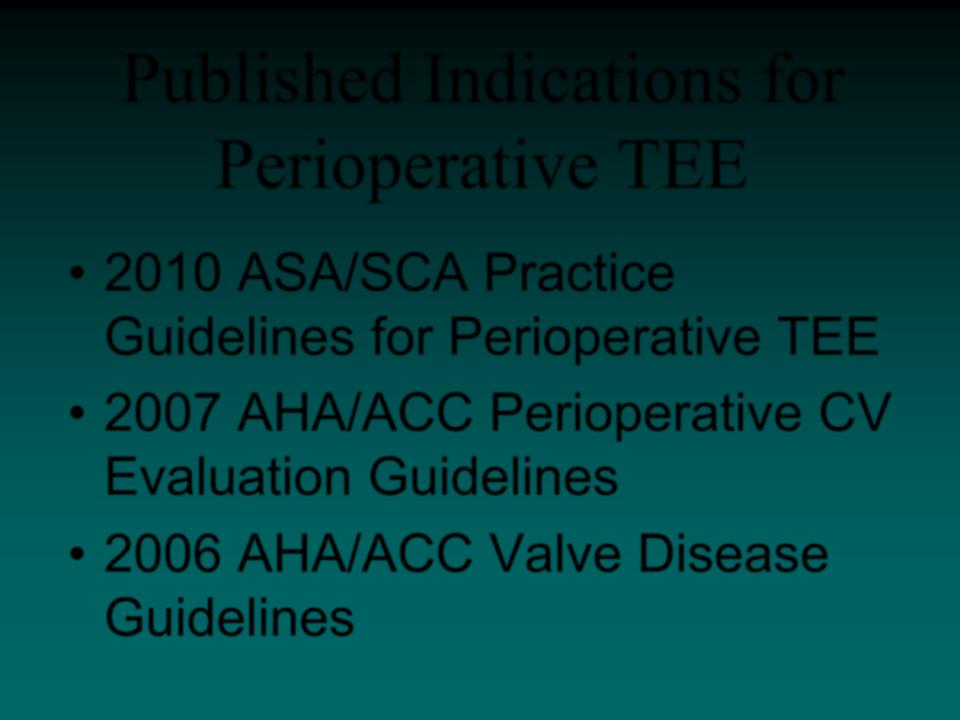
Published Indications for Perioperative TEE
•2010 ASA/SCA Practice Guidelines for Perioperative TEE
•2007 AHA/ACC Perioperative CV Evaluation Guidelines
•2006 AHA/ACC Valve Disease Guidelines
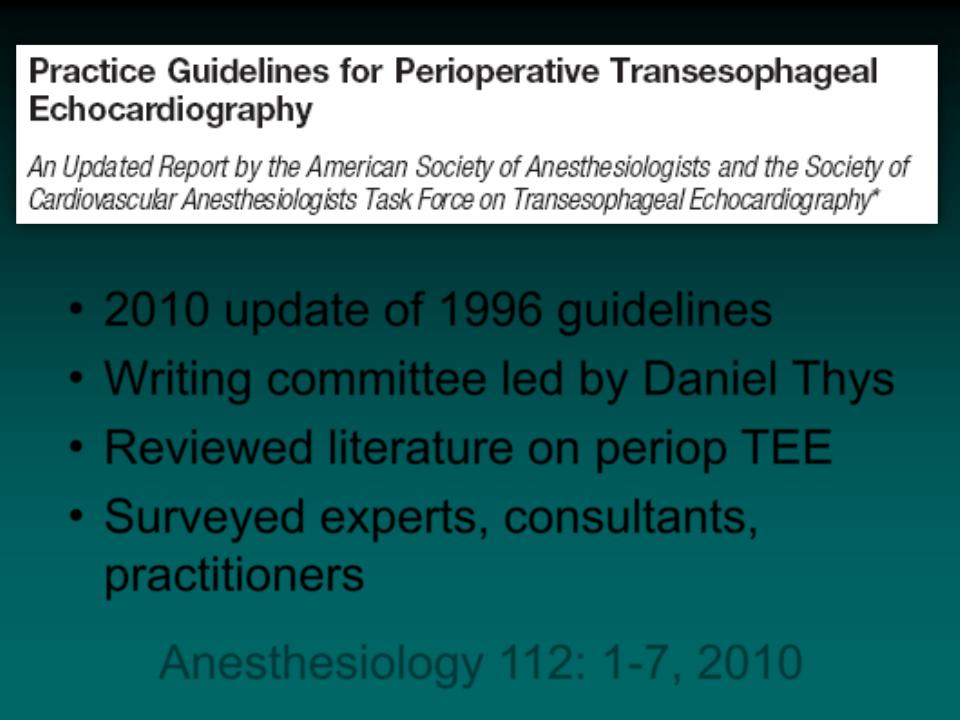
•2010 update of 1996 guidelines
•Writing committee led by Daniel Thys
•Reviewed literature on periop TEE
•Surveyed experts, consultants, practitioners
Anesthesiology 112: 1-7, 2010
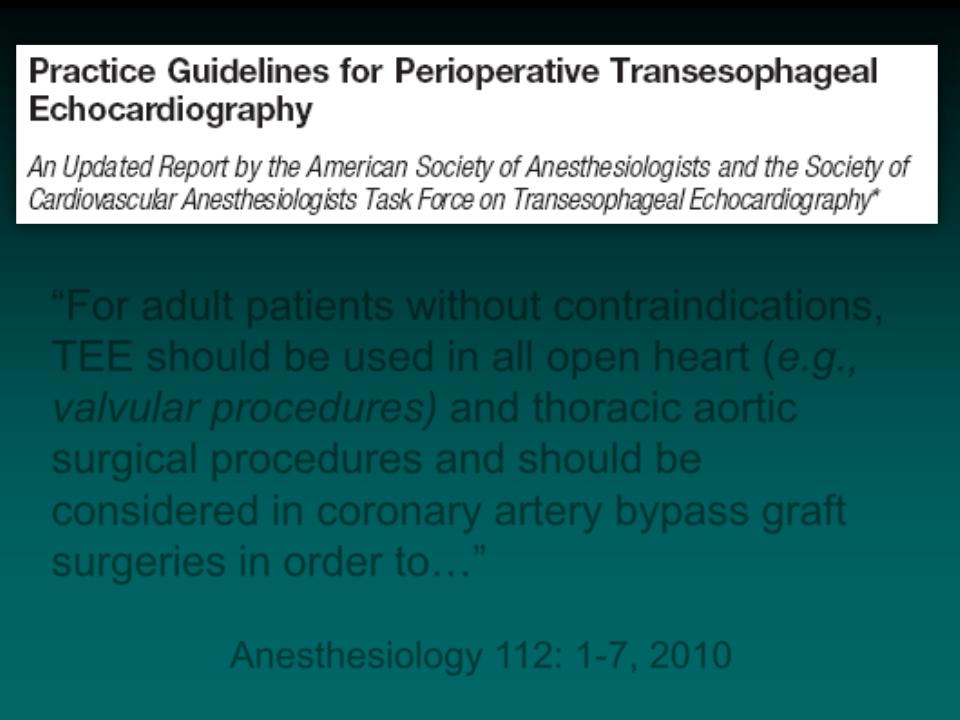
“For adult patients without contraindications,
TEE should be used in all open heart (e.g., valvular procedures) and thoracic aortic surgical procedures and should be considered in coronary artery bypass graft surgeries in order to…”
Anesthesiology 112: 1-7, 2010
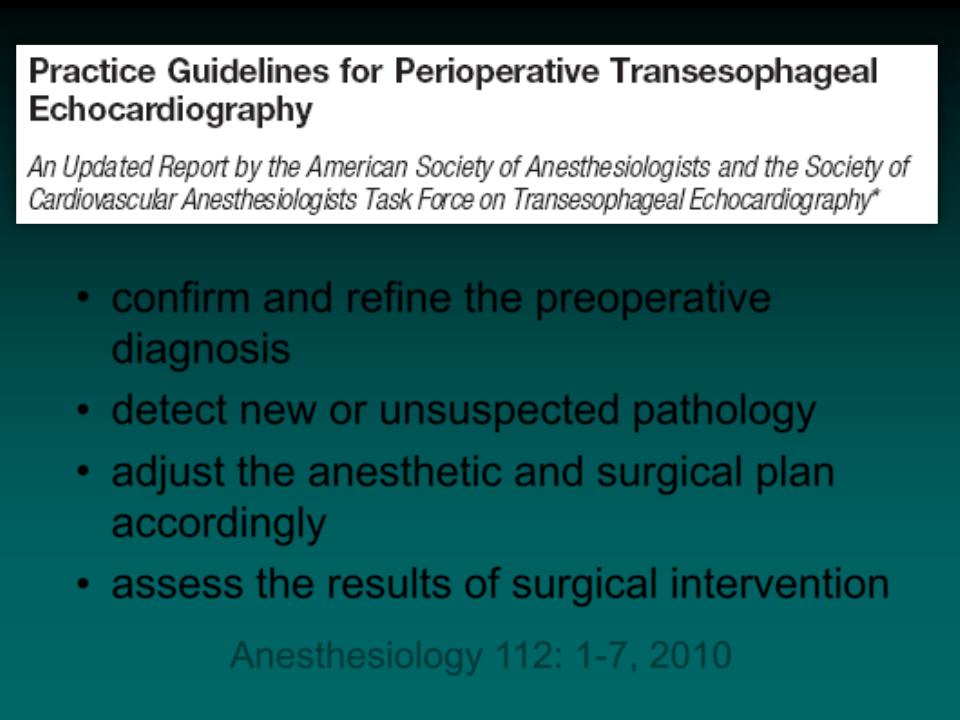
•confirm and refine the preoperative diagnosis
•detect new or unsuspected pathology
•adjust the anesthetic and surgical plan accordingly
•assess the results of surgical intervention
Anesthesiology 112: 1-7, 2010

ACC/AHA 2007 Guidelines on Perioperative Cardiovascular Evaluation and
Care for Noncardiac Surgery
8.4. Use of TEE
Class IIa
1. The emergency use of intraoperative or perioperative TEE is reasonable to determine the cause of an acute, persistent, and life-threatening hemodynamic abnormality. (Level of Evidence: C)
JACC 50: 1707-1732, 2007
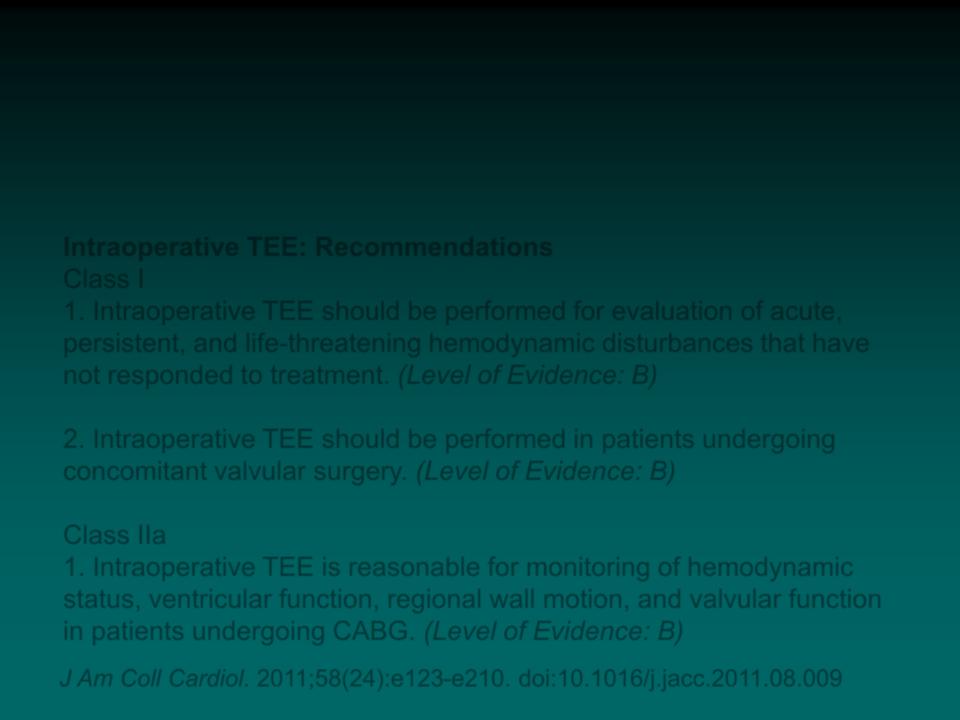
2011 ACCF/AHA Guideline for Coronary Artery Bypass Graft Surgery
A Report of the American College of Cardiology Foundation/American Heart Association Task Force on Practice Guidelines Developed in Collaboration With the American Association for Thoracic Surgery, Society of Cardiovascular Anesthesiologists, and Society of Thoracic Surgeons
Intraoperative TEE: Recommendations
Class I
1.Intraoperative TEE should be performed for evaluation of acute, persistent, and life-threatening hemodynamic disturbances that have not responded to treatment. (Level of Evidence: B)
2.Intraoperative TEE should be performed in patients undergoing concomitant valvular surgery. (Level of Evidence: B)
Class IIa
1. Intraoperative TEE is reasonable for monitoring of hemodynamic status, ventricular function, regional wall motion, and valvular function in patients undergoing CABG. (Level of Evidence: B)
J Am Coll Cardiol. 2011;58(24):e123-e210. doi:10.1016/j.jacc.2011.08.009
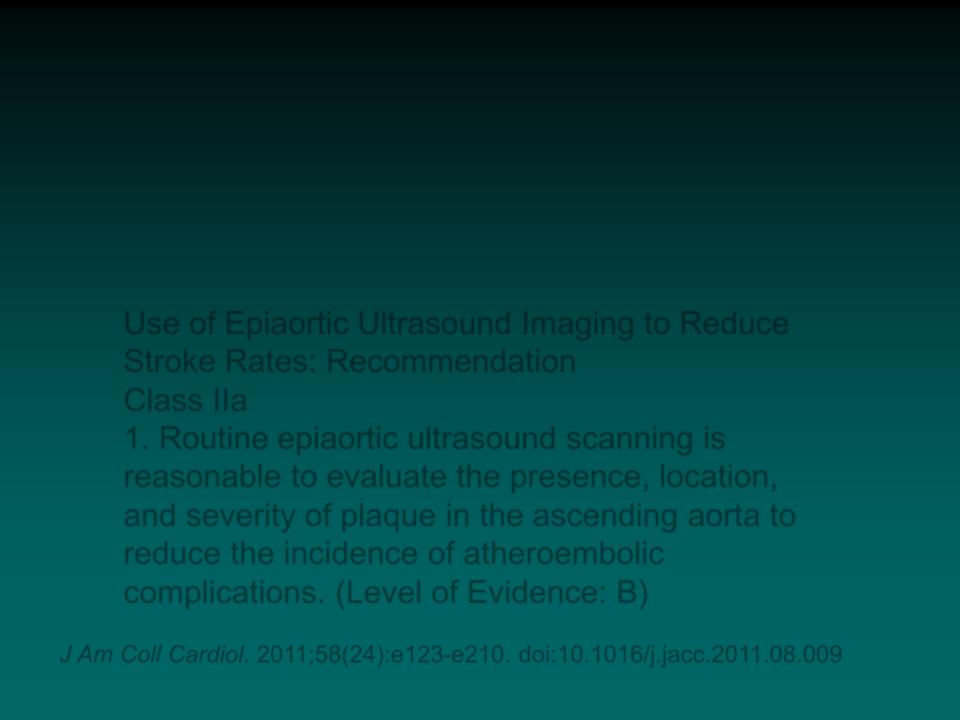
2011 ACCF/AHA Guideline for Coronary Artery Bypass Graft Surgery
A Report of the American College of Cardiology Foundation/American Heart Association Task Force on Practice Guidelines Developed in Collaboration With the American Association for Thoracic Surgery, Society of Cardiovascular Anesthesiologists, and Society of Thoracic Surgeons
Use of Epiaortic Ultrasound Imaging to Reduce Stroke Rates: Recommendation
Class IIa
1. Routine epiaortic ultrasound scanning is reasonable to evaluate the presence, location, and severity of plaque in the ascending aorta to reduce the incidence of atheroembolic complications. (Level of Evidence: B)
J Am Coll Cardiol. 2011;58(24):e123-e210. doi:10.1016/j.jacc.2011.08.009
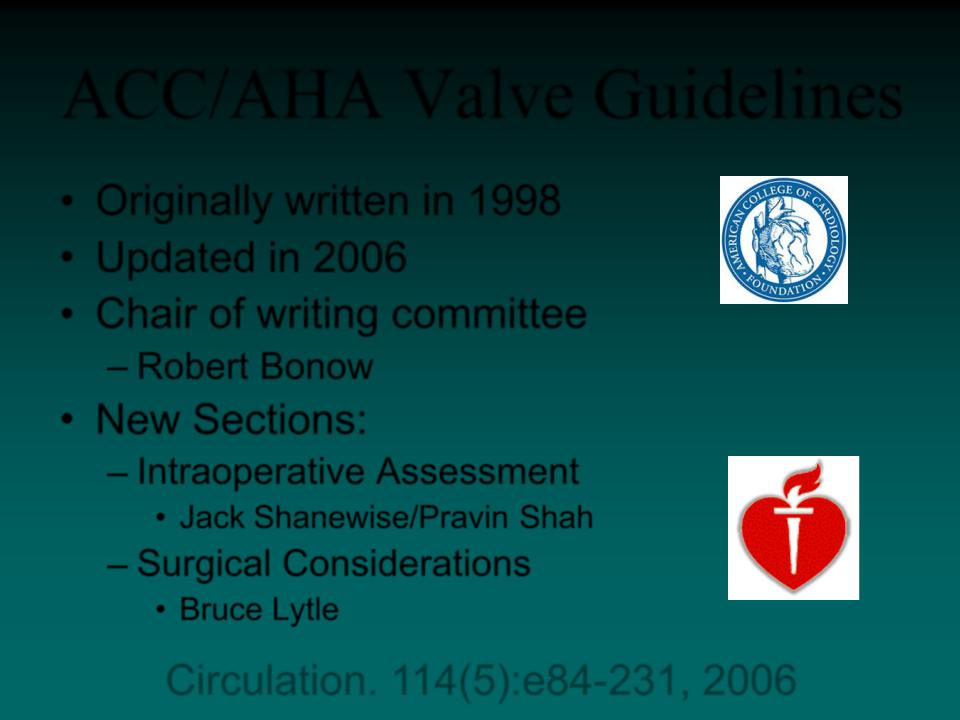
Circulation. 114(5):e84-231, 2006
ACC/AHA Valve Guidelines
•Originally written in 1998
•Updated in 2006
•Chair of writing committee
–Robert Bonow
•New Sections:
–Intraoperative Assessment
•Jack Shanewise/Pravin Shah
–Surgical Considerations
•Bruce Lytle
Circulation. 114(5):e84-231, 2006
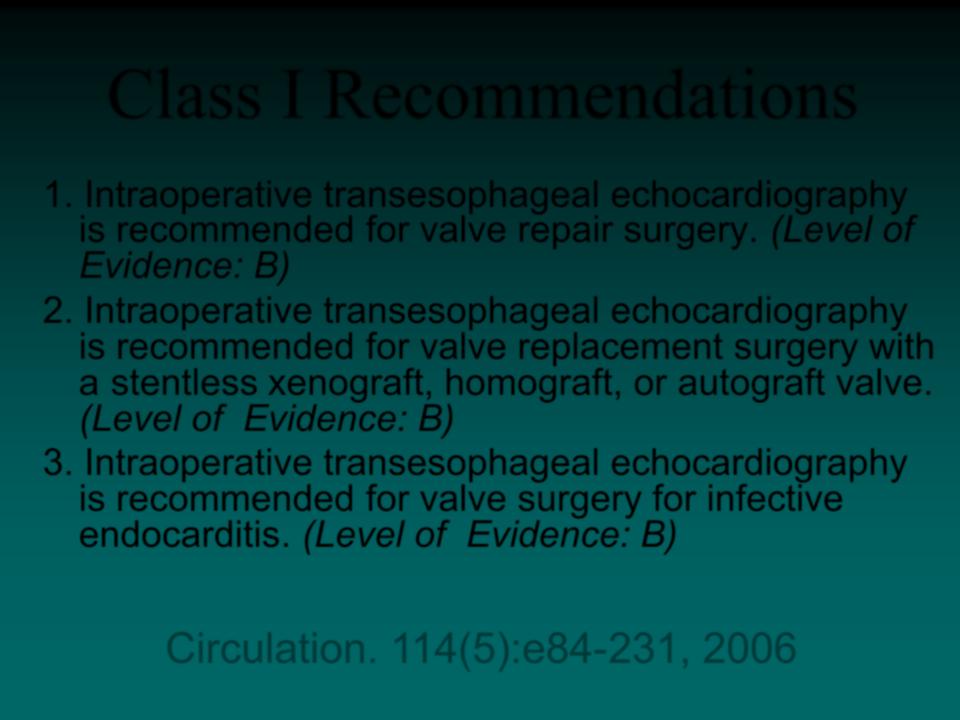
Class I Recommendations
1.Intraoperative transesophageal echocardiography is recommended for valve repair surgery. (Level of Evidence: B)
2.Intraoperative transesophageal echocardiography is recommended for valve replacement surgery with a stentless xenograft, homograft, or autograft valve.
(Level of Evidence: B)
3.Intraoperative transesophageal echocardiography is recommended for valve surgery for infective endocarditis. (Level of Evidence: B)
Circulation. 114(5):e84-231, 2006
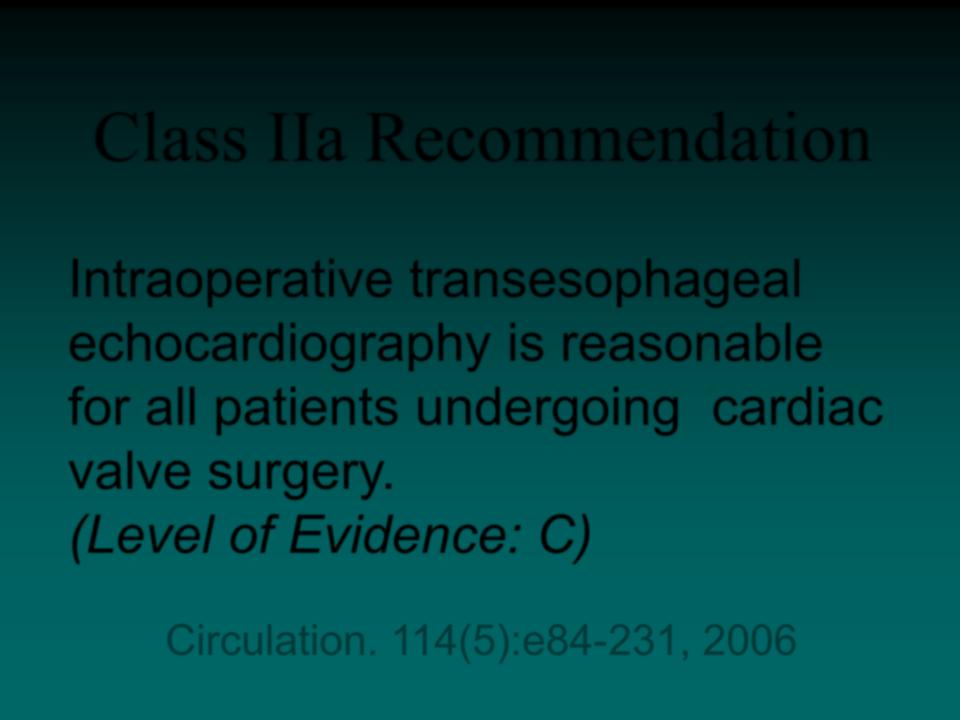
Class IIa Recommendation
Intraoperative transesophageal echocardiography is reasonable for all patients undergoing cardiac valve surgery.
(Level of Evidence: C)
Circulation. 114(5):e84-231, 2006
